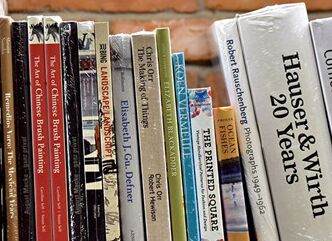海明威最爱的10本书
|
1.War and Peace by Leo Tolstoy It is Tolstoy’s most famous work, with the exception of Anna Karenina. The Petersburg party crowd is made up of privileged persons with deep psychological and family issues, while the Moscow families are beset with debt but in better emotional states. Readers who don’t shy away from political, philosophical, or religious topics of all kinds will be fascinated by Tolstoy’s grasp of Napoleonic historical forces mixed with changeable but fascinating human individuals. 2. Anna Karenina by Leo Tolstoy More humanly centered than his other well-known work, War and Peace, Tolstoy makes it clear that life is far too complicated for easy handouts of mercy or judgment. The novel begins with a case of family brokenness and adultery, and sympathy is geared mostly toward the malefactor. As the story unfolds, the dark sides of the likable siblings appear, who are outwardly accepted by society in the face of moral betrayal. The contrast between Anna, who runs away with her lover Vronsky, and Lenin (who marries Vronsky's former romantic interest), is especially worth reading. 3. Madame Bovary by Gustave Flaubert The tale of Emma Bovary lies somewhere between a cautionary tale of Victorian anti-womanhood, Bohemian ideals, and a George Bernard Shaw warning against middle-class morality. Flaubert doesn't trouble to make his female protagonist a relatable person; the focus lies more on an examination of a thoroughly self-centered woman who has an astonishing lack of judgment. The despair and affairs brought on by boredom, and the resulting financial misery accompanying mounds of debt, are a much more graphic portrayal than any Thomas Hardy novel, and Flaubert never forgave his countrymen for putting him on trial for violating public morals. 4. Sketches from a Hunter's Album by Ivan Turgenev Those who love the Hunger Games series won’t be disappointed by this Russia classic. These 25 real-life observations of Turgenev include the human landscape, from peasants to mothers and doctors, in their struggle for existence and poetic depictions of sorrow. In the end, his insights of beauty and sorrow led to the hunter becoming hunted by the state, although rumor has it that these tales also led to the abolition of the serf classes’ misery. 5. The Brothers Karamazov by Dostoevsky This is one of the best allegorical novels to explain the fractured nature of 19th century Russia. Each character is representative of one of the ruling classes. There is the father Fyodor, the landowner who is negligent about his land, but greedy in using its produce for himself. There's Dmitri, who has been passed around from house to house, and has grown up an entitled but debt-ridden soul. There's the skeptic Ivan, who wishes to live more among cold concepts than people. Alyosha, is the mystic and religious peacemaker, and the illegitimate Smerdyakov. Throughout are themes of love, law, and duty, which makes this one of the best Dostoyevsky books to read besides Crime and Punishment. 6. Buddenbrooks by Thomas Mann A similarity to The Forsyte Saga could be traced to Mann's work of fiction; both depict multiple generations of a wealthy family experiencing a slow decline, and both families move through spiritual and mental instability. However, these German traders show more humor and less of a dependence on art and music as saving graces. Mann received the 1929 Nobel Prize for his literary efforts. 7. Far Away and Long Ago by W.H. Hudson Readers who long for bird sanctuaries and decry the desire for smokestacks in cities will resonate with Hudson’s lament over South America. Later on in life, the author became an ornithologist and became friends with novelist Joseph Conrad, but this book is a reflection of his childhood memories of Argentina and the strong lure of nature. Depictions of family life are few, and saved for the last chapters. 8. Adventures of Huckleberry Finn by Mark Twain While Twain’s other classic (Tom Sawyer) is known for the chapter on the joys of fence-painting, Huck Finn is known for his friendship with an escaped slave and enmity with the Widow Douglas who adopts him. Being an enterprising and adventurous soul, Huck manufactures his own death to throw his drunken father off the scent of discovered treasure. While on the run down the Mississippi River, Huck discovers a different sort of life on boats; the work also appealed to Ernest Hemingway and the American public, who ignored initial critical reviews. 9. The Red and the Black by Stendhal This anti-society novel begins rather strangely, with a depiction of a carpenter’s son who believes himself duty-bound to create a love affair with the local mayor’s wife. After quite a few social gaffes and run-ins, Julien finally comes to the realization that he needs to drop the masks that plague his life and escape the desert of selfishness. However, he’s too late to escape the fate of the noose he’s placed around his own neck, despite the fact that he realizes his social ambitions before he dies. 10. Dubliners by James Joyce Most readers know that Joyce experimented with form in his novels, but it's no Ulysses, though Joyce kept to his classic themes of disaffection with social and spiritual forces beyond the invididual. The story of high schoolers Eveline and Jimmy, their hopes and dreams of the future, could help young adults to identify with the characters in this string of short stories. |









